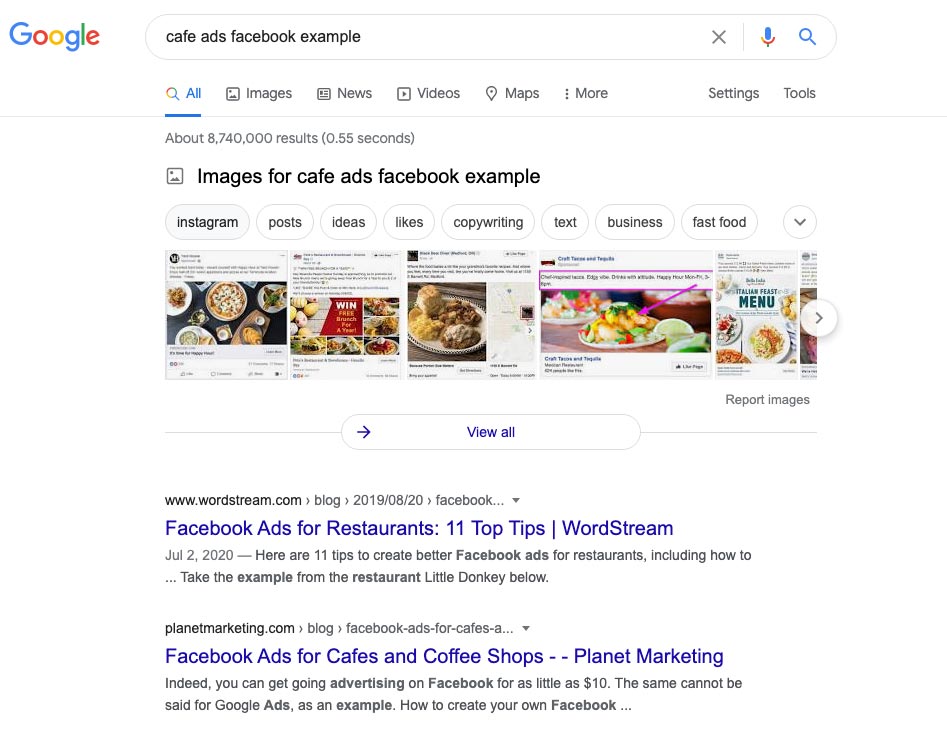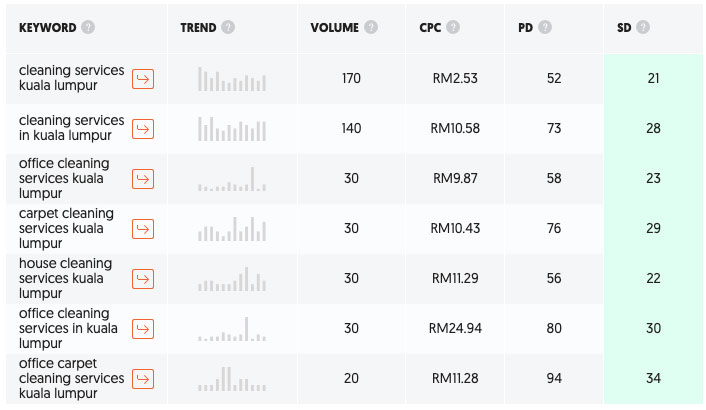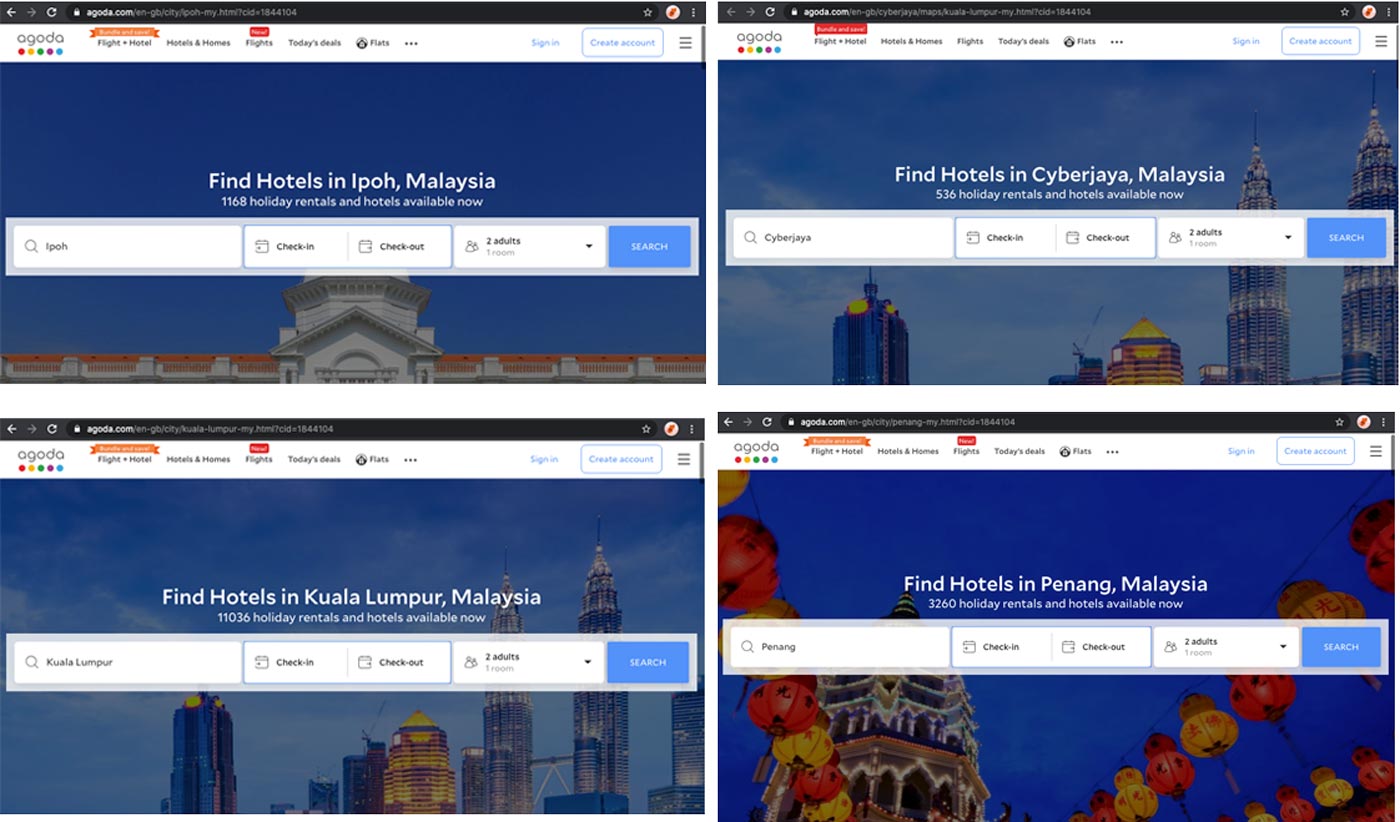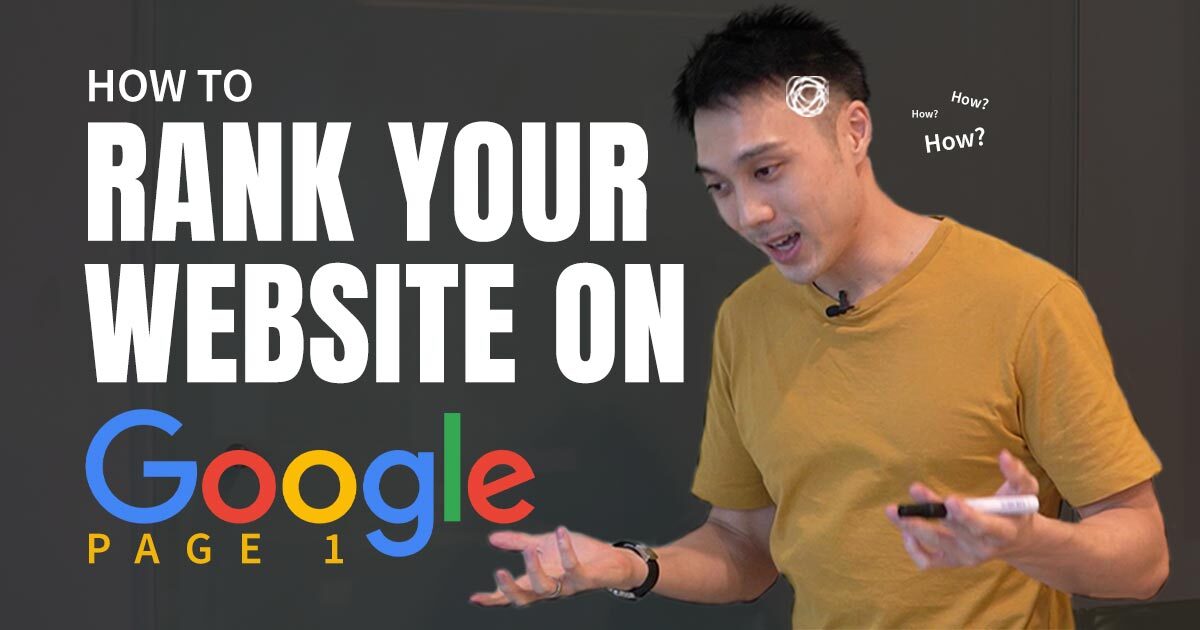You run a business in Malaysia. Over the years (or months) or running your business, you’ve definitely come across the advice to rank your website on Google – and then see a stream of revenue coming your way.
As a business owner (and not a full-time digital marketer), it can feel overwhelming to think about having to learn all the strategies to rank your website. SEO is a huge subject!
I get that.
Turns out, it’s actually easy to rank your website in Malaysia, provided that you bring value to people. In this post, I want to share a few ways to rank your website on the top page of Google.
With some discipline and work on your end, you’ll see your website ranked in no time.
But before we get started, I want to answer a common question:
Want to do better SEO?: Download our 18-point SEO checklist (Free)
Can I rank my website without technical SEO?
Technical SEO generally refers to the optimization of your website and server – to comply with the rules of search engines.
Now, my answer will probably shock you. (And make many SEO experts disagree with me.)
But yes, you can rank your website without dwelling into too much technical stuff – given that most CMS platforms like WordPress and website builders have taken care of some fundamental technical SEO for your website.
That said, here are 5 must-have technical SEO factors:
- Mobile-Friendly: Most people are on smartphones. Make sure your website translates well on mobile phones. You can use Google mobile-friendly test to check your website.
- Speed: Whether on desktop or mobile. Your website’s loading speed is a major reason for SEO. Why would Google rank a website that loads slow for readers?
- Site Errors: Does your website contains broken pages and 404 errors? Google’s not going to spoil their user’s experience with your website. Fix them! (Use Screaming Frog to find broken stuff on your site.)
- Security (HTTPS sites): Security is one of the biggest things that Google takes in consideration off. Better make sure your site is secured with an SSL certificate, or Google will warn your visitors with an insecure message.
- Crawl Errors: Use Google Search Console to check if Google has encountered crawl errors on your site. A crawl error basically means the Google bot tried reaching a page on your website but failed to access it – and thus won’t rank the page.
That wasn’t too difficult, was it?
Learn: Learn to fix your website & SEO optimize it in Growth Marketing 360.
Now that you have fixed your website, let’s talk about the three simple ways to rank your website.
1 – Ranking with Content
Wait, not another SEO article asking you to create long-form content on your website that contains over 1500 words?
Hear me out.
Ranking your website is not about blindly creating loads of content. Rather, it’s about creating content to satisfy the search intent of your prospects.
Suppose you are a copywriter and you have a website promoting your services. Don’t go about blindly creating overrated listicle articles, such as ‘5 tips to copywriting’ or ‘Top 10 landing page copywriting secrets’.
But think about what your prospects will be searching on Google for?
Let’s say as a copywriter, you really want to focus on helping cafe owners. Okay, let’s think about the typical search journey of a cafe owner.
The cafe owner (let’s name her Sarah), wants to put up some ads on Facebook to launch a new brownie promotion. So Sarah goes on Facebook, started creating her ad, but she suddenly got stuck on writing the ad copy. Thinking she needs some copywriting ideas, she goes on Google searching for ‘Cafe ads Facebook example’.

Notice the results that show up in the image above. Notice how the webpages on top are those that seek to satisfy the search query?
Now that you understand the intent of the prospect, can you create content, whether they are articles, videos, or infographics to satisfy their search intent?
Of course, it would be important to put keywords into your content so that Google understands its context. But when you create content that satisfies a search intent – then it doesn’t really matter how many words your article contains.
2 – Build Local Web Pages (Landing Pages)
Have you ever Googled search queries such as ‘cafe near me’ or ‘locksmith in Bandar Utama’?
Chances are, you did.
And this is in fact how most prospects search on Google. Take a look at the example search data below for cleaning services:

What we can observe here is that search queries tend to be localized, e.g. ‘cleaning services kuala lumpur’. It’s a huge opportunity to optimize your website for these local search queries!
Let’s say you operate a company that offers cleaning services, and your service covers a few states in Malaysia.
Create separate landing pages – for each state you provide your service at. Here’s an example by Agoda.com with separate landing pages, optimized for each local state:

For Agoda, they could just have a general webpage where visitors can search for hotels in every state. But why did they choose to create separate pages for each state?
Because unlike a physical store, your ‘shelf-space’ in the digital world is unlimited. Creating localized pages for each state, city or township – helps Google consider showing your webpages for local searches due to their relevancy.
This practice also enhances the experience of prospects searching online in their locale, as they find relevant results faster.
Free Training: How to build high-converting landing pages
3 – Increase Your Local NAP Citations
NAP stands for Name, Address, and Phone.
And a citation simply means a mention of your business name, address, and phone number. Citations are found all over the internet from online business directories, to map locations, social media, websites, and apps.
Here’s an example of a local citation:
Business Name: LEAD by UCAN Technologies Sdn Bhd.
Address: Level 11, Menara KEN TTDI, No. 37, Jalan Burhanuddin Helmi, Taman Tun Dr Ismail, 60000 Kuala Lumpur.
Phone Number: +60 18-277 7989
But where are some platforms to get citations from? Here are a few:
- Google My Business – A must-have to set up for business’ local SEO.
- Facebook – Your business page allows you to put in citations. Notice how Facebook pages show up for some searches on Google.
- Yellow Pages
- Business List
- Expat.com
Increasing NAP citations and ensuring they are consistent across different websites is useful to help your website rank for local searches. (a.k.a local SEO)
That said, it’s important for citation to be specific & relevant as well. (The same way backlinks work.)
For example, if you are a pet groomer and you happen to have a citation from a media website in the pet niche within an article titled ‘5 Pet Groomers in KL’. This will help Google see the importance of your business and considers showing your business the next time prospects in KL do a search.
It’s also worth mentioning that there are two types of citations.
Structured Local Citations
Examples of structured citations are platforms like Google My Business and Yellow Pages. There is a consistent and specific structure for NAP citations on these sites.
Unstructured Local Citations
Citations on a blog post or article, without a consistent structure, is considered a citation too. For example, a media website writes a story about your pet grooming store and then leaves your business name, address, and phone number at the end. That counts as an unstructured local citation too.
Conclusion
Ranking your website on the first page of Google doesn’t have to be something reserved only for technical SEO marketers. Most businesses, like yourself – can do this without dwelling on too much technical knowledge.
If you’re a local business that is looking to rank your website locally in Malaysia, follow the tips above and you’ll see your website climb the search engines quickly.
Watch a video to learn more about these tips here:


0 Comments